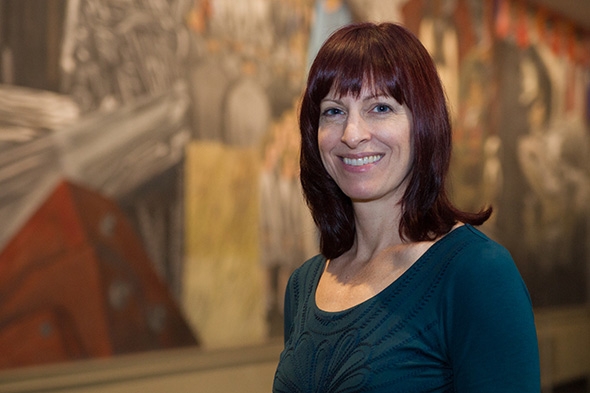Dartmouth’s Mary Coffey has won the 2013 Charles Rufus Morey Award, an honor given by the College Art Association to a distinguished book of art history.

“I am truly speechless, excited, and honored,” says Coffey. “I don’t think anyone sets out writing a book expecting something like this. I certainly did not.”
Coffey, an associate professor of art history, won for her first book, How a Revolutionary Art Became Official Culture: Murals, Museums, and the Mexican State, beating out three other finalists. The award will be presented in February at the 101st Annual College Art Association (CAA) conference in New York City. The Morey Award dates back to 1953 and is named for one of CAA’s founding members.
“Mary Coffey is already a leader in her field,” says Adrian Randolph, the associate dean of the faculty for the arts and humanities. “The Morey Award signals that she is now a leader in the discipline of art history.”
The book, which took Coffey 10 years to research and write, focuses on three prominent museums in Mexico City and the role they played in institutionalizing mural art since the Mexican Revolution. Coffey contends that this art form was initially considered a radical political movement, but is now seen as a kind of nationalist propaganda for the Mexican state.

“What sets this book apart is the way in which it links, intricately, the analysis of politics, museum practices, and the production of art,” says Randolph, the Leon E. Williams Professor of Art History. “Her writing has some of the vibrant dynamism and cultural texture of the murals she so adeptly studies.”
Though her book was honored in the field of art history, Coffey wasn’t sure initially that it would find its way into that category.
“My writing is on the borderline between cultural studies and art history,” says Coffey. “For some years I really wondered if it fit within art history.”
Coffey is grateful for the support from Dartmouth for her book, as she was a recipient of a Class of 1962 Faculty Fellowship, a Dickey Center Manuscript Review, the David Bloom and Leslie Chao Fellowship, and the Karen E. Wetterhahn Memorial Award.
One of the artists Coffey examines in her book is painter José Clemente Orozco. Orozco spent two years at Dartmouth as he crafted his famous mural series The Epic of American Civilization. Coffey gives public tours and lectures of the murals, which are located in Baker-Berry library.
Coffey says she is “about halfway” through work on a new book about the exhibition of Mexican folk art in both Mexico and the United States.
She hopes the Morey Award illustrates the scholarship that takes place at Dartmouth.
“We are a research university as well as a teaching institution,” she says.
